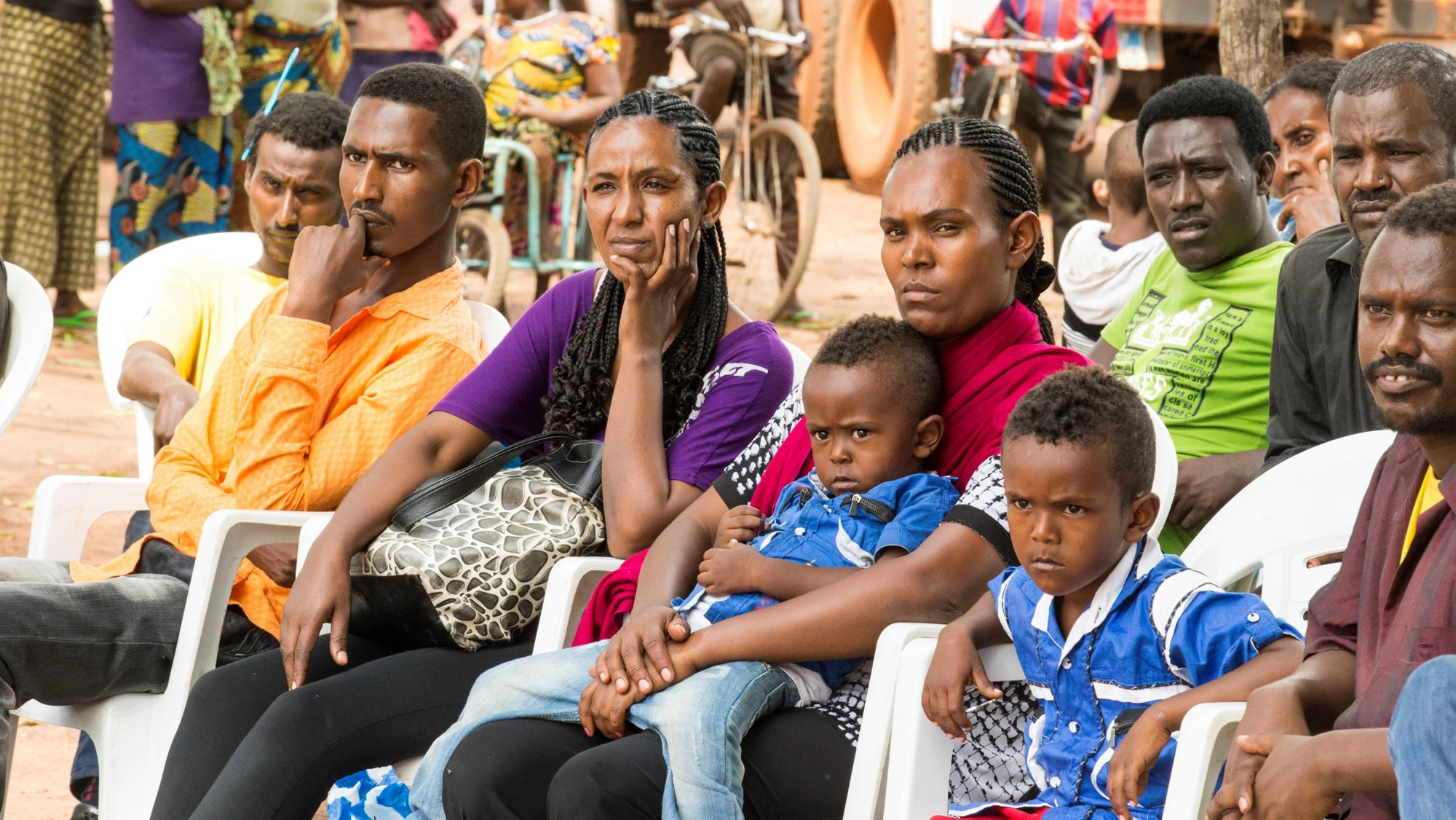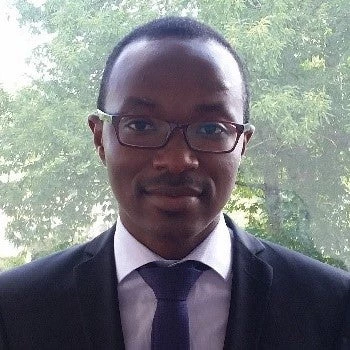 Foreign asylum seekers arrive in South Sudan ©UN Photo/Isaac Billy 2015
Foreign asylum seekers arrive in South Sudan ©UN Photo/Isaac Billy 2015
During the early stages of my research, I remember seeing a photo of a young Rohingya refugee girl looking out over Palong Khali refugee camp—a sprawling site located on a hilly area near the Myanmar border in south-east Bangladesh. An estimated 600,000 Rohingya sought safety in Bangladesh in late August 2017. I cut out that picture and put it in front of my workspace. I named the girl Mariam and promised her I would work tirelessly on my research to help her and all the other refugees worldwide.
The numbers are unprecedented. By the end of 2018, there were 70.8 million forcibly displaced people worldwide. Of these, 3.5 million were asylum seekers driven from their homes as a result of conflict, natural disasters and persecution. But finding asylum is a difficult process as countries are hesitant to accept asylum seekers due to political, cultural and security reasons. The increase in asylum applications has generated new fears surrounding cultural identity, security and labor market competition that have resulted in more restrictive asylum policies.
In doing my research, I wanted to understand what factors are at play when countries are deciding to accept and/or reject asylum applications, and if differing asylum policies are problematic for those seeking asylum. My published study, Understanding Decisions Made on Asylum Applications in Host Countries, looks at data from 2000-2017 in 201 origin countries and 113 destination countries and is based on a panel data set constructed from the United Nations High Commissioner for Refugees (UNHCR) public data on individual asylum claims and decisions.
To better understand asylum admission policies and processes in host countries, I asked the following questions: How do host countries differ in terms of efficiency (if procedures for status recognition are fast or slow), generosity (the number of favorable decisions upon asylum claims), and the type of protection granted (full refugee status or other forms of protection). In particular, I wanted to better understand the role of political and economic factors in explaining these differences.
I found that political factors negatively affected the number of asylum claims accepted only in high-income countries but not low- and middle- income countries (country GDP for high-income countries = $12,375 or more; middle-income= $1,026 to $12,375; low-income= $1,025 or less).
In high-income countries, an election year seemed to accelerate the application processing, while political polarization slowed it down. Although there was a positive correlation between election years and processing time for asylum applications, the more efficient the process, the more applications were rejected . This suggests that efficiency comes at the expense of lower acceptance rates.
In contrast, political polarization in host countries led to fewer asylum applications processed, decreased the number of applications rejected, and increased complementary forms of protection granted to asylum seekers . Complementary forms or subsidiary protection limit rights granted to refugees in terms of permanent stay, family reunification, access to the labor market and welfare benefits.
Geographical and cultural proximity also influenced asylum approval policies. Applying for asylum in neighboring countries increased the number of favorable decisions of any kind made on asylum claims and reduced the number of applications rejected . Distance between origin country and host country showed the opposite effect.
Between 2000 and 2015, more than 60 percent of asylum applications went to EU or OECD countries. Most of these applications came from non-neighboring countries. Although the EU countries received the majority of applications, these countries represented an acceptance rate of only 13 percent. However, the acceptance rates averaged 25 percent in non-EU OECD countries and 30 percent in the rest of the world (all non-OECD countries).
Based on these results and from the perspective of asylum seekers, differing policies for approval applications, such as limited forms of protection vs. full refugee asylum protection, are problematic. Ensuring fair protection processes and creating a favorable protection environment for refugees are important goals pursued by the UNHCR and other international institutions that protect refugees. During periods of political polarization, countries often see subsidiary protection as a preferred option. But subsidiary protection puts asylum seekers in a less favorable position in that it often limits the asylum seekers length of residence permits and family reunification. Since subsidiary restrictions often limit refugees’ rights as compared to the Geneva Convention, it is crucial to encourage countries to comply with international standards .
Going forward, this research can help asylum seekers and refugee organizations recognize the political and macroeconomic factors that can influence host countries’ asylum policies that lead to delayed responses or fewer admittances, thus informing strategies for better orientation of asylum applications from different countries of origin.
This is important for several reasons:
- in helping asylum seekers decide where they should file asylum applications;
- in helping policy makers and the public in host countries be aware of how asylum application outcomes can be affected by political and macroeconomic factors; and
- in helping international organizations that assist refugees create policies and programs that can improve the success rate of asylum applications.
We would like to continue the conversation by asking you what do you think about complementary or subsidiary forms of protection granted to asylum seekers? Send us your feedback!
This work is part of the program “Building the Evidence on Protracted Forced Displacement: A Multi-Stakeholder Partnership" funded by UK aid from the United Kingdom's Department for International Development (DFID).


Join the Conversation